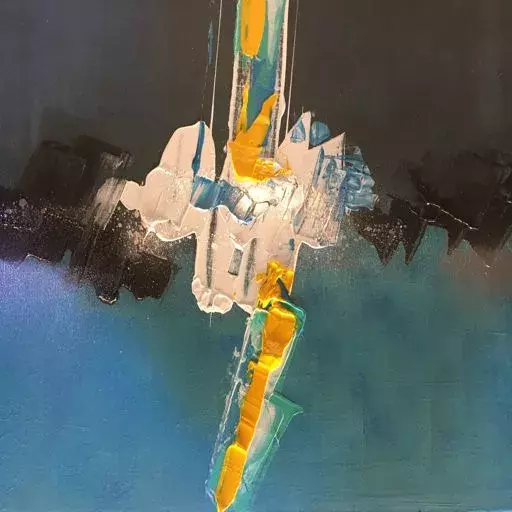Hello all, I am considering on getting a 3D printer. I want to print some stuff for a project. I am relatively new to this. I need the slicer software to be compatible (preferably open source) with linux since that’s what I am using. I have only found the stuff from Prusa to be compatible but they are expensive. I have heard of ender 3 but it is the only os printer by creality and saw the repo is 3yo without updates.
Can I get some suggestions?
The printer is more or less separate from your PC. As several others have pointed out, you need the slicer software to create, using your PC, the file that you feed into your printer. What software your printer is running makes no difference.
And to highlight, you don’t need to use a specific company’s slicer with your printer. Lots of people use PrusaSlicer with Creality printers.
To 3d print something you need to convert a model (.stl or something else) to gcode. A slicer will do this for you. I use Cura (it’s open source) and works great on Linux. Then you have to send that gcode to the printer. You can do that with micro SD card which is what I noramlly do or you can connect to the printer using USB cable and send the gcode using a slicer.
Bambu Lab makes some affordable printers that work practically right out of the box - great for beginners, but not at the.expense of being able to dig down and tweak everything should you so wish. Its slicer is available for Linux.
Your OS doesn’t matter. Printers are dumb and only understand Gcode, which is basically a series of steps to follow for printing your part (move the head this amount in that direction while extruding that much etc.). Producing that code is the slicer’s job. What you want is a slicer that works perfectly on Linux. And good news, all open-source slicers work perfectly on Linux. What you need tho is a slicer that includes your printer’s profile.
Try Cura or Prusaslicer (available as Flatpaks) or Orcaslicer (Appimage for now but will move to Flatpak eventually).
Prusaslicer is a bit more complicated than Cura but works way better once you get used to it
You don’t even need a Slicer that offers a profile for the printer. I have an obscure one and had to make a custom profile, but it works fine.
I personally would recommend Cura over Prusa. They both do the same and copy each other all the time, but Cura is simpler by default imo.
I switches from Cura to PrusaSlicer a couple years back, and immediately got noticeably better prints. Both with pretty much default settings.
What volume of print area do you need? Any specific filament types you want to use? What sort of budget? Do you want something that just works or are you fine with tinkering?
Hardware
I mentioned in another topic that prusas solid machines, yeah they’re pricey, kits are cheaper than assembled and because they’re easy to service, I wouldn’t even hesitate at grabbing a second hand one.
A lot of really good responses, there’s a ton you can choose from there, however I’m going to suggest looking into a voron v0.2 kit as an option, it’s totally open source and you own your hardware, I self sourced my v2.4 but I’ve seen decent reviews of the formbot kits, they’re up to date with the voron project and look to include some mods in the kit as well, the v0.2 with everything you need to put together and a dragon HF hotend is just under $500 USD, the v0.2 is a 120x120x120 printer and is totally capable of printing abs (in fact all of the voron printers can have their parts printed on it afaik) they also have trident and v2 kits but they’re twice the price for the larger kits. Another option would be to source a kit from a local supplier, will be a bit more expensive generally though.
I’ve done both, my first printer was a Mendelmax 2 kit that I had to sell unfortunately when I moved cross country, learned a lot building it so I bought a preassembled prusa as my next one. If diy and modding is your thing I 100% recommend building a kit, and even if tinkering isn’t your thing you’ll learn a lot about how they work by building one, but also totally get the need for something that’s capable out of the box.
Software
I use SuperSlicer heavily, Ellis provides a great tuning guide and superslicer profiles for vorons, but overall I like it, it’s a fork of PrusaSlicer which is itself based on Slic3r which has been around forever. I think SuperSlicer and PrusaSlicer are on flathub, but they also provide appimages. SuperSlicer has a ton of settings, PrusaSlicer has some really nice features and out of the box printer and filament profiles, also a measuring tool which is nice. I like the interface better on SuperSlicer and it has some tuning tools built in.
I second the formbot voron 0.2 kit, it was my first printer and it was a great experience. I have had a lot of heat creep issues with the dragon hf hotend though, I’d probably recommend the standard one instead. Other than that it’s been much less required tinkering than I was led to believe. It generally just works.
Oh yeah the HF has a bit of heat creep, just swapped my franken-prusa to a noctua 24v hotend fan and it seems better, I’ve also found it super filament specific. I also dropped the plate temps as PLA was unhappy in the enclosure with the summer heat, had to do a rebuild and found the tube going into the extruder wasn’t flush up and some PLA had blobbed into the void.
I like the dragon specifically because it’s fixed in places, I’ve totally had self induced issues with a v6 hotend which prompted me to look into it in the first place, also was component compatible. I like the uhf a lot on my v2.4, I don’t push my printers to their limits but I’m pretty happy with what it can put out with a 24mm3/s profile with a standard 0.4 mm nozzle, it’s really nice with a 0.6 mm as well.
Yeah that was my experience with the v2, I tinker with it because I can’t help myself, but it’s been a rock solid experience once I got it dialed in (which I would expect to do with any printer). They’re also popular and well documented so there’s a lot of information out there. Klipper is also amazing, my experience with it and the v2 was what prompted me to klipperise my prusa in the first place.
Since you asked, I really don’t have any issue as long as it is no smaller than roughly 15cm in one direction.
Edit: will ofc look at the stuff you sent. Replying quickly since I am doing sth rn : P Thank you!!!
Mm yeah the v0.2 is just a bit too small then, only 12cm in each direction. You can check out their other kits, I have a v2, have heard great things about the trident, I’m currently thinking about building a 250x250 one or smaller, but they (the supplier I linked) don’t include printed parts for those kits, the guts are still there though if you go for one check out the voron print it forward program, they’re strict on who’s able to fulfill requests.
Orcaslicer runs on Linux which interfaces with almost every printer. It is a merge between Prusa and Bambu slicer
Bambu Labs is closed source but currently by far the best option for out of the box printing.
If you want open source consider the Sovol Sv08 but as a beginner this is a difficult start in the hobby. Or a Prusa printer.
Most slicer software is cross platform, free and open source. The biggest ones are PrusaSlicer, Cura and OrcaSlicer. You can use all of these with lots of different brands of printers. Creality’s own slicer used to just be a slightly modified version of Cura (Not sure if their new “Creality Print” software is, but it doesn’t matter, you’re rarely tied to any specific software, at least with FDM printers). Bambu Lab Studio is not available for Linux, but OrcaSlicer is, and as far as I know it’s just an open source community edition of Studio.
In other words, you’ll have plenty of options on Linux.
Personally using an Elegoo Mars 2 with Chitubox and I had no issues with it so far
saw the repo is 3yo without updates
that’s because too many chinese companies work like this: “ooooh there’s a new toy!!” and launch a slightly different model after a few weeks, discontinuing the older ones
because their firmware is just kanged marlin, it’s possible to build&install the latest and greatest: https://marlinfw.org/docs/basics/install.html
You might want to double check this, but as far as I remember both the Sovol SV06 and SV08 are open source. The SV06 sounds in line with your desired budget, IF I remember correctly the open source thing. And as others have said, Cura, Prusa slicer and Orca are open source and cross platform.
I just got a Sovol v8, using it with orca slicer on Linux without any issues. Orca slicer has a GPL license. Sovol v8 is based on the voron v2.4 printer and sovol have released the source and 3d files for the v8: https://github.com/Sovol3d/SV08 and its firmware is based on the open source klipper firmware. So overall is quite an open designed printer. Those are the big reasons I went for it and would highly recommend it if it is within your budget (which gives you quite a lot for its cost).
But quite a lot of printers use and/or are compatible with most popular slicers of which most are open source. I think bamboo labs printers are the major one that is not open by design. Though I admit I have not been that emersed in the available printers in recent years.
Haven’t heard of them, checked it out after this comment and I think it is what I am looking for. A bit concerned about the lack of fillament detector (watched the Maker’s Muse video).
Buy a bambu a1 mini, their slicer (based on prusaslicer) works great on linux and their printers are really easy to use, have good print quality and print fast.
^ if you want to print instead of thinkering with your printer
The printer doesn’t really matter. The slicer is what is os specific and most any slicer will work with Linux these days. It’s easier if you find a slicer with a premade profile for your printer but not a big deal. I’ve used prusa slicer for years with my printers (creality, voron, biqu, elegoo). Find a printer that’s in your budget and meets your needs then see what slicers have a profile for that. For modern printers klipper is a big plus. I just got a kobra 3 and it’s a decent machine. My ender 5 has been a workhorse but there are better printers these days. I don’t know enough about bamboo labs but they seem to be the new fad (well… sorta new now).
I currently do all of my 3d printing from Linux. My printer is physically connected to my server, which is running Ubuntu and has a docker container running Octoprint. The container is based on Debian. The printer itself is a crappy knock-off of the Ender 3. The only issue was identifying the port I needed to pass through to the container… And by “issue”, I mean I had to run
ls -l /dev/serial/by-idand put the resulting device in thedevicesdeclaration of mydocker-compose.yamlfile.My main machine is Arch and I use Prusa Slicer as an Appimage. The only issue there is that Prusa Slicer likes to SegFault while slicing some models with some settings on my system. It’s not common, but it does happen. I think this is related to the Nvidia drivers; but, by using the Appimage it’s just the application which crashes and I can’t be arsed to spend the time to solve the issue. I also tried Cura, but ran into this bug (tl;dr: don’t use Nvidia on Linux). Overall though, it just works and I don’t really think about the fact that I’m on Linux.
For modeling, I personally use OpenScad, as I have all the artistic capabilities of a mortally wounded water buffalo. One of these days, I’ll pretend to try to learn FreeCad, which runs just fine. Blender also runs great on Linux.
In short, so long as you aren’t buying anything too proprietary, you should be just fine.
The Ender 3 is the printer I recommend new users get. It’s open source hardware and firmware, the devices can be found for as little as $20 sometimes. Bambu Studio, UltiMaker Cura, and PrusaSlicer, and probably loads more are all awesome slicer software that is compatible with a LARGE number of 3D printers.
more info for people leaning towards ender: ender 3’s need to have their wiring fixed by removing tinned ends from wires in screw terminals and either putting them in bare or with crimped ferrules to reduce fire hazard. The heat break should also be swapped for all/bi metal one that puts the ptfe tube out of the melt zone as it will continually degrade from the heat and lead to problems a newbie probably can’t diagnose. and the bed mounts suck, and the build plate once petg gouges it out, and the extruder when the tension arm inevitably snaps, and the list goes on…
that said I have 3 now. 2 were acquired for free. One is a switchwire conversion, one is ender NG, and the other is kevinakasam belt modded. I would recommend both mods that are not the switchwire for cost to improvement ratio.
Ender is a horrible introduction to printing far too much tinkering and manual calibration. Bambu A1 is the way to go now.
Bambu labs all the way. Unless you want your hobby to become printer maintenance.
Also unless you want to work in multiple colours and not have a giant pile of printer poop waste.
The amount of filament Bambu wastes is ridiculous.
Any multi color print is going to have waste.
It’s not as much as you might think, plus you have to purge to switch filaments with a single nozzle design. I would argue my Bambu saves filament on the balance because print failure is so low.
I think I’m wasting a lot less filament color switching with my new X1C than I ever did with all the failed prints on my old Sidewinder X2. Nothing like checking an 18 hour print at hour 17 and finding that a corner lifted or a support toppled over from all the movement.







